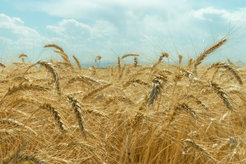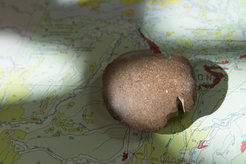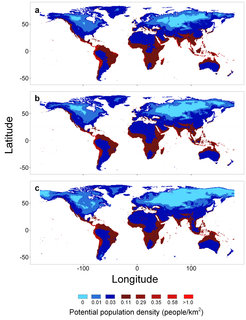New Clues to the Origins of Agriculture
The invention of agriculture changed humans and the environment forever. The practice originated independently in a least a dozen different places over several thousand years. But why did agriculture begin in those places and at those particular times in human history?
An international research team led by scientists from Colorado State University and the Max Planck Institute for the Science of Human History has uncovered a common feature in the development of agriculture – an improvement in the local environment led to food surpluses and increased population densities. Using data obtained from studies of modern hunters-gatherers, the scientists created models that were able to predict times of increased population density for human populations in the past. These maps showed that the invention of agriculture in 12 different locations around the world at different times in the past would have coincided with an increase in population density. These findings, published in Nature Human Behaviour, help to resolve the ongoing debate about why and how agriculture developed.

Using a new methodological approach, an international team of researchers led by Colorado State University and the Max Planck Institute for the Science of Human History have uncovered evidence that supports one theory in the long debate about the origins of agriculture: that agriculture arose out of moments of surplus, when environmental conditions were improving and populations lived in greater densities.
The first-of-its-kind study, published in Nature Human Behaviour, used unique methods to reach its results, which lend support to this existing theory about the origins of human agriculture. In contrast, the researchers found little support for two other long-standing theories: one, that during desperate times, when environmental conditions worsened and populations lived at lower densities, agriculture was born out of necessity, as people needed a new way of getting food, and two, that no general pattern exists, but instead the story of agriculture's origins is tied to unique social and environmental conditions in each place.
Senior author Michael Gavin, an associate professor in CSU's Department of Human Dimensions of Natural Resources and a research associate at the Max Planck Institute for the Science of Human History, said the findings and the general methodological approach may help explain other watershed events in human history.
"There have been several key threshold events in our history that changed the entire course of our species," Gavin said. "Agriculture is a link to so many other components for what the world is like today for billions of people. This begins to help us explain a key moment in human history."
Predicting the past

Studying the depths of human history is challenging, as little data are available when looking back tens of thousands of years. Scientists typically rely on archeological evidence, but getting a broad picture is difficult, since archeological digs cover relatively small areas.
To overcome these limitations, the researchers modeled correlations between the environment, cultural traits and population densities of relatively recent foraging societies, which used hunting, fishing and gathering to obtain food.
Among the factors they considered as possible predictors of population density were environmental productivity, environmental stability, the average distance travelled when people in a community moved to a new location, whether people owned land or other resources, and distance to the nearest coast.
This model, the team found, did a remarkably good job at predicting recent population densities, which led the researchers to pair the model with data on past climate. In doing so, they could “hindcast,” or predict into the past, the potential population density of the entire globe dating back thousands of years.
Population maps
This study was the first to produce maps of potential population densities dating back as far as 21,000 years ago. The researchers used these maps to examine conditions that existed in each of the 12 centers of origin of agriculture, at the point in time when these practices began.

Patrick Kavanagh, a Colorado State University postdoctoral scientist and one of the study's lead authors, said the different centers of origin for agriculture all showed improving environmental conditions and increasing population densities at the time the practice developed. "All regions that developed agriculture showed the same pattern," he said.
Researchers believe that improving environmental conditions may have allowed people the luxury of tinkering with new ideas, and that having more people living in one place would allow ideas to be shared and honed, with sparks of innovation following.
While the researchers found commonalities in the surplus aspect of the different locations, they did not necessarily share all other relevant conditions. Socially, the places and people studied were probably very different. In addition, the timing of when agriculture began in these major centers varied over thousands of years, and the species of plants they were working with was different.
But, amazingly, although the centers of origin varied in time by thousands of years and ranged from the New Guinea Highlands to Central America and the Middle East, they all had one thing in common: improving environmental conditions and the potential for higher population densities.
"In all of these major origin centers of agriculture, there were some critical environmental changes that needed to occur" in order for agriculture to be developed, Kavanagh added. "Environmental conditions needed to improve — which we saw in all 12 centers of origin — despite variation in the timing and the diverse geographic locations in which they occurred."
The research team is now exploring other applications for the maps they produced. “It is amazing to examine these maps of the potential population density of the world dating back tens of thousands of years," said Gavin. "We could potentially create them going back to the dawn of our species. This provides a new tool to explore many unanswered questions about human history.”
Press Release by Colorado State University


